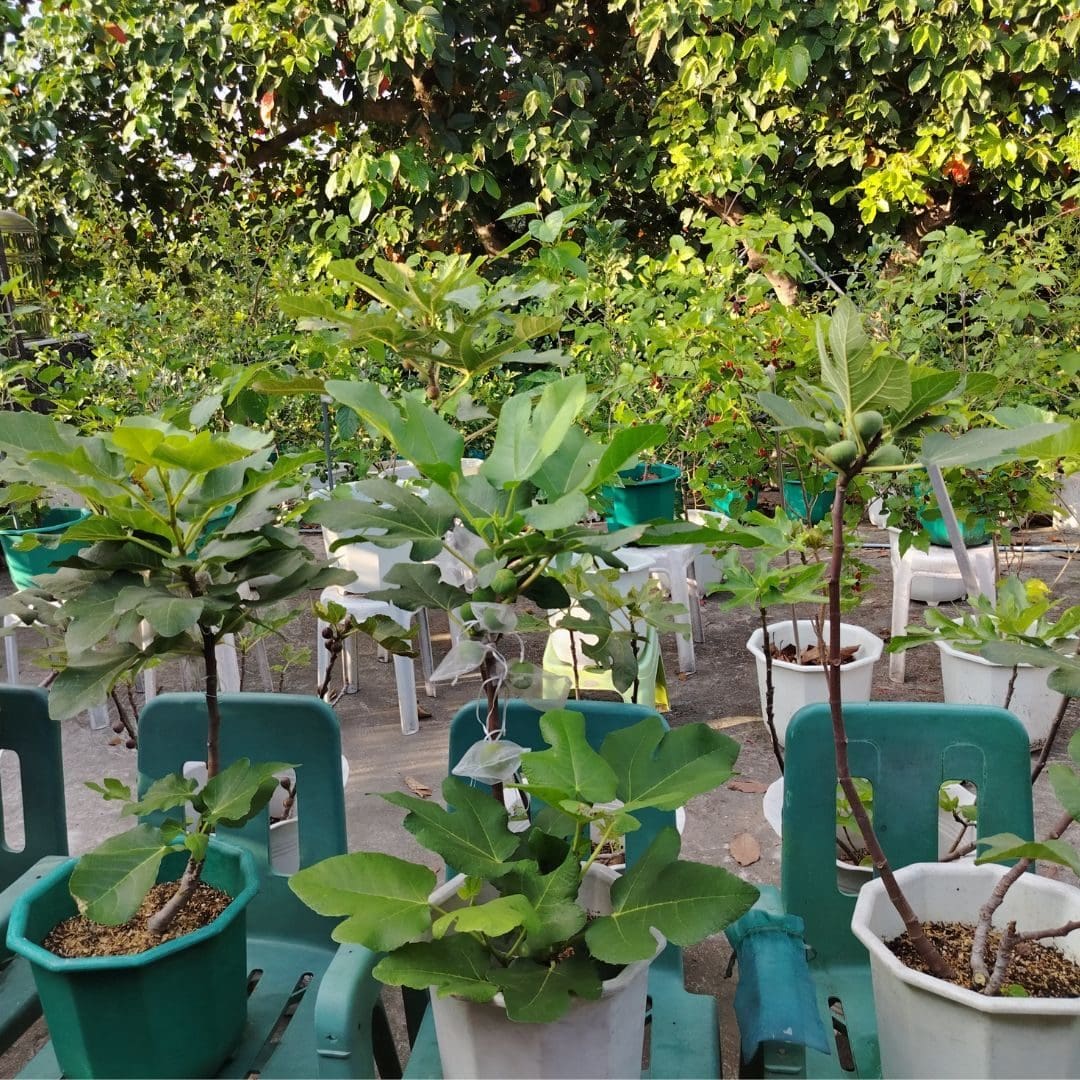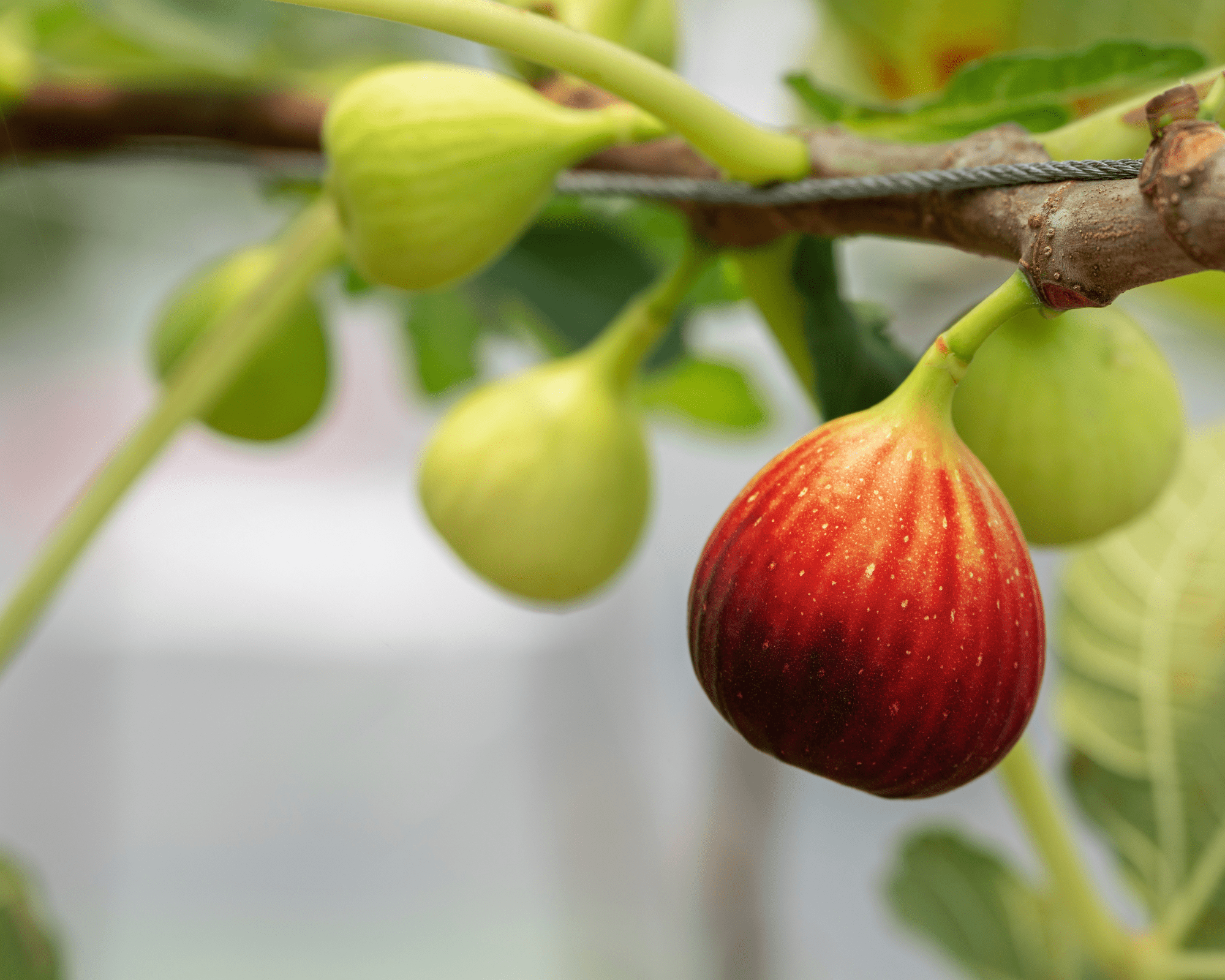Please read the full disclosure for more info. 💚
Your potted fig tree guide-
Growing a fig tree in a pot is a fantastic option for gardeners with limited space, or those who live in areas with cooler climates where figs would otherwise struggle to grow. With the right care and attention, a fig tree can thrive in a container and provide you with delicious, homegrown fruit. In this guide, we’ll explore everything you need to know about growing and caring for a potted fig tree whether you live in cold or hot climate.
Why Grow a Fig Tree in a Pot?
Before diving into the specifics of care, let’s briefly discuss why growing a fig tree in a pot might be the perfect choice for you:
Space-saving: Ideal for small yards, balconies, or patios.
Portability: Easy to move indoors during the winter months if you’re in a colder climate.
Convenience: Can be placed in areas that receive the ideal amount of sunlight without having to modify your yard.
Choosing the Right Fig Tree Varieties for Pots
Not all fig trees are created equal when it comes to container growth. Some varieties are more suited for life in a pot than others. Look for dwarf or semi-dwarf varieties as they tend to stay compact, which makes them easier to manage in smaller spaces.
Popular fig tree varieties that do well in pots include:
Petite Negra: A small, dwarf variety perfect for small spaces or containers.
Celeste: Known for its small size and delicious, sweet figs.
Black Mission: A classic fig variety that works well in pots, though it may require a larger container as it grows.
Choosing the Right Pot for Your Fig Tree
The right pot can make a big difference in the success of your potted fig tree. Consider the following when selecting a container:
Size: Choose a pot that’s at least 18–24 inches in diameter with drainage holes. Figs have extensive root systems, so a larger pot gives the roots enough space to spread out and grow.
Material: Terracotta, ceramic, or wood are great choices. These materials allow the soil to dry out faster, which helps prevent overwatering—a common issue with potted plants.
Drainage: Ensure your pot has drainage holes to allow excess water to escape and avoid root rot.
Potting and Soil Tips for Your Fig Tree
Once you have your fig tree and the right pot, it’s time to get your tree in the ground (or in the pot!).
Soil: Figs prefer well-draining soil. A good option is a mix of potting soil, perlite, and compost to create a light, airy blend that drains well but retains enough moisture for the tree’s roots.
Repotting: Figs will eventually outgrow their pot. Repot your fig tree every two to three years into a slightly larger container to allow for root growth.
Planting Depth: When planting, ensure the top of the root ball is level with the top of the pot to avoid burying the stem too deep.
Light Requirements for Potted Fig Trees
Figs thrive in full sunlight, so you’ll need to place your potted fig tree in a location that gets at least 6 hours of direct sunlight each day. A sunny patio, balcony, or windowsill (if grown indoors) is ideal.
Watering Tips for Potted Fig Trees
Consistent watering is key to keeping your potted fig tree healthy, but overwatering can cause problems like root rot.
Frequency: Water when the top 1-2 inches of soil feels dry. During the growing season, this may mean watering every 3–4 days. In cooler months, you’ll water less frequently.
Avoid standing water: Always empty any excess water from the saucer underneath your pot to prevent root rot.
Fertilizing Your Potted Fig Tree
Fig trees are heavy feeders, especially when grown in containers. Using a slow-release, balanced fertilizer will ensure your fig gets the nutrients it needs for healthy growth and fruit production. You can fertilize once every 4–6 weeks during the growing season (spring and summer).
Pruning Potted Fig Trees
Pruning is essential for maintaining the shape of your fig tree and promoting strong, healthy growth. Here’s how to go about it:
Remove dead or damaged branches.
Trim back new growth to keep the tree manageable and prevent overcrowding.
Encourage a bushy shape by cutting back leggy growth.
Managing Temperature and Winter Care
Figs are sensitive to frost, so if you live in a cooler climate, you’ll need to protect your potted fig tree during the winter months:
Move it indoors: When temperatures drop below 50°F (10°C), move the tree to a location where it will stay warm and protected, like a sunroom, basement, or garage.
Outdoor protection: If you can’t bring the tree indoors, consider wrapping the pot with burlap or insulating material to help protect it from freezing temperatures.
Common Issues with Potted Fig Trees
Even with the best care, you may encounter some issues. Here’s how to address common problems:
Yellowing leaves: Often a sign of overwatering or nutrient deficiency. Check your watering habits and consider adding a fertilizer.
Fruit drop: This can happen due to stress, like a sudden temperature change or insufficient water.
Pests: Figs can attract pests such as aphids or spider mites. A gentle spray of insecticidal soap can help remove them.
Harvesting Figs from Your Potted Tree
If all goes well, your potted fig tree will reward you with delicious fruit! Fig trees typically take 2–3 years to start producing fruit, but once they do, harvesting is easy:
Ripe figs: Wait until the figs are soft to the touch and start to droop slightly. The color will vary depending on the variety, but ripe figs will feel squishy and have a deep, rich color.
Gentle picking: Carefully twist or cut the figs from the tree to avoid damaging the branches.
Conclusion: Enjoying Your Potted Fig Tree
With the right care and attention, a potted fig tree can be a beautiful and rewarding addition to your garden or indoor space. Whether you’re growing figs for their delicious fruit or simply enjoying their lush green foliage, following these tips will help ensure your tree thrives.


